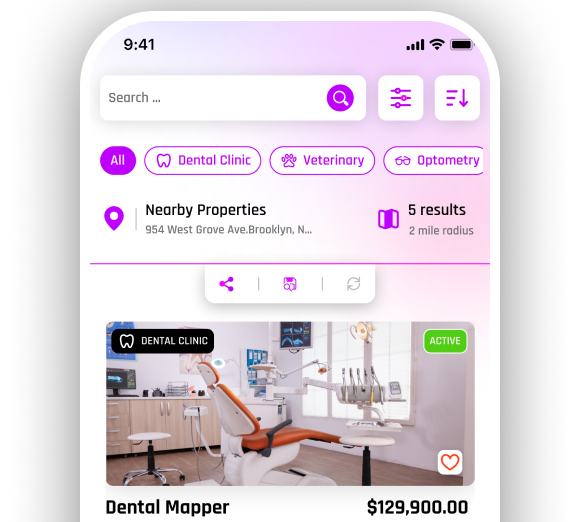Succession Planning for Dental Practice Owners: How to Exit Smoothly

Owning a private practice for sale is more than a career—it’s a lifetime investment of passion, effort, and dedication. But there comes a point when every dentist must consider the next chapter: stepping back, retiring, or transitioning ownership. Succession planning is not simply about leaving; it’s about protecting the legacy you’ve built, ensuring patient care continues seamlessly, and safeguarding the financial future of both you and your practice. The reality is, without a structured plan, many dental professionals find themselves scrambling when the time to exit arrives, often facing avoidable financial and emotional stress. By starting early and considering the right strategies, you can turn what could be a daunting process into a rewarding conclusion to your ownership journey.
In this blog, we’ll explore the key elements of dental practice succession planning, from setting clear goals to choosing the right successor, so you can exit with confidence and peace of mind.
Why Succession Planning Matters for Dentists
Succession planning is more than a legal requirement; it’s about ensuring continuity for patients, staff, and the practice itself. Here’s why it matters:
-
Preserving Legacy – Your years of work deserve to live on through a well-prepared successor.
-
Financial Security – Proper planning maximizes the value of your practice and ensures you’re compensated fairly.
-
Patient Care Continuity – Patients feel reassured knowing their treatment will continue without disruption.
-
Team Stability – A clear plan reduces staff uncertainty and maintains morale.
Without succession planning, you risk losing not just value but also the trust and reputation you’ve built over decades.
Key Steps for Effective Succession Planning
1. Start Early
The earlier you begin, the smoother the process. Ideally, start planning 5–10 years before your desired exit. This allows time to optimize your operations, increase profitability, and make your business more appealing to potential buyers or successors.
2. Define Your Goals
Ask yourself:
-
Do you want to sell completely and retire?
-
Would you prefer a phased exit, working part-time while mentoring the next owner?
-
Is passing the practice to a family member or associate important?
Clarity on your end goals will shape every other decision in the succession plan.
3. Get a Professional Valuation
Understanding the true worth of your practice is crucial. A professional valuation considers:
-
Revenue streams
-
Patient base demographics
-
Overhead and profit margins
-
Local market trends
Accurate valuations are especially important when exploring healthcare mergers and acquisitions, since buyers will scrutinize every financial detail before making an offer.
4. Strengthen the Business Before Selling
Potential buyers look at more than revenue—they evaluate the strength of your systems and patient relationships. Focus on:
-
Streamlining operations and improving efficiency
-
Retaining a skilled, loyal team
-
Enhancing marketing to ensure steady new patient flow
This not only increases the value of your practice but makes it more attractive to a successor.
5. Choose the Right Successor
Finding the right person is about more than credentials. Consider:
-
Alignment with your practice philosophy
-
Commitment to patient care
-
Ability to maintain staff and community trust
Sometimes this is an associate dentist, other times it’s an outside buyer. In either case, prioritize cultural fit along with financial readiness.
6. Plan the Transition Period
An abrupt exit often disrupts patient trust and staff loyalty. A phased handover—where you remain involved for 6–12 months—can:
-
Smooth the transfer of responsibilities
-
Allow time for patients to build trust with the new dentist
-
Provide mentoring for the new owner
7. Address Legal and Financial Details
Work with experienced advisors to handle:
-
Contracts of sale
-
Employment agreements
-
Tax planning to minimize liabilities
-
Estate planning if family inheritance is involved
Proper structuring prevents disputes and ensures both parties are protected.
8. Communicate Transparently
When the time is right, communicate your plan to staff and patients with honesty. This builds trust and reduces uncertainty. The earlier they understand the continuity plan, the smoother the transition will be.
Common Mistakes to Avoid in Succession Planning
-
Waiting Too Long – Delaying reduces practice value and limits options.
-
Neglecting Practice Valuation – Without accurate numbers, you risk leaving money on the table.
-
Overlooking Staff – Employees are critical to continuity and must be factored into the plan.
-
Not Preparing Patients – Sudden changes can erode trust and patient retention.
-
Skipping Professional Guidance – Financial and legal advisors are essential to avoid costly missteps.
Financial Considerations for Exiting Dentists
As a practice owner, your exit is also your financial retirement plan. Important considerations include:
-
Tax Implications – Work with an accountant to minimize capital gains and income taxes.
-
Pension & Retirement Planning – Align practice sale proceeds with your personal financial goals.
-
Debt Management – Resolve or structure any outstanding loans before the transition.
-
Post-Exit Income – Decide whether you’ll fully retire or continue practicing part-time under the new ownership.
If your office also owns the property, understanding commercial real estate valuation is crucial, as it can significantly add to your total return when selling.
Building a Legacy Beyond Ownership
Exiting ownership doesn’t mean leaving dentistry entirely. Many retiring dentists choose to:
-
Teach or mentor younger professionals
-
Volunteer in community dental programs
-
Serve on boards or industry associations
-
Continue part-time clinical work
By planning your exit intentionally, you can stay connected to the profession while enjoying flexibility and freedom.
Exiting on Your Own Terms
A smooth succession is not just about transferring ownership—it’s about securing your legacy, protecting your patients, and ensuring your financial future. With clear goals, professional guidance, and enough lead time, you can create a plan that allows you to step away with confidence. The key is to start early and treat your succession plan as carefully as you treated your practice growth.
Your dental practice is more than a business; it’s a reflection of your life’s work. Exiting should feel like the culmination of success, not a loss. By preparing now, you can pass the torch gracefully, ensuring your practice continues to thrive for years to come.
Ready to start mapping out your own exit strategy? PracticeFinderApp makes succession planning easier than ever. With tools to organize your valuation, track financial readiness, and connect with the right advisors, you’ll have everything you need in one place. Download the app today and take the first step toward a stress-free transition.

